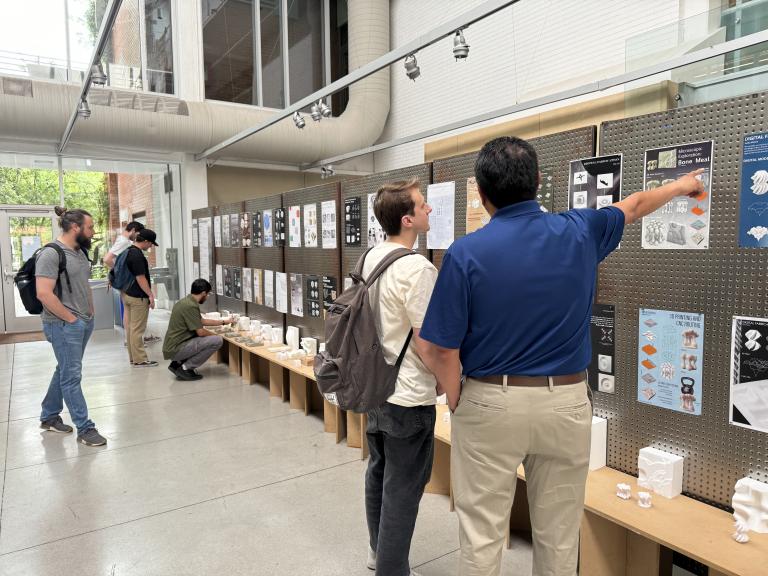Students in a sustainable materials design lab course exhibited their work in a collaborative campus display highlighting environmental responsibility in architecture.
The undergraduate and graduate students fabricated low-carbon concrete tiles inspired by the microstructures of alternative construction materials such as coffee grounds, bone meal, eggshells, steel waste, bamboo fiber, buffelgrass and mining waste, said their instructor, assistant professor of civil and architectural engineering and mechanics Hee-Jeong Kim. Replacing the cement or aggregate found in conventional concrete with these waste products and byproducts reduces its embodied carbon, she said. The students performed mechanical testing, chemical characterization and imaging analysis of their samples.
The engineering students worked with those from a College of Architecture, Planning & Landscape Architecture class, led by associate professor of architecture Susannah Dickinson, that advances skills in digital modeling and visualization. By sharing the data on their low-carbon concrete to the CAPLA students, the engineers hope to inspire use of sustainable materials in architecture.
“It was impressive to see students embrace an interdisciplinary collaboration, particularly in such societally important fields as sustainable architecture,” said Kim. “Such activities not only enrich students' educational experiences but also have the potential to influence the future of architectural design toward greater sustainability and efficiency.”




